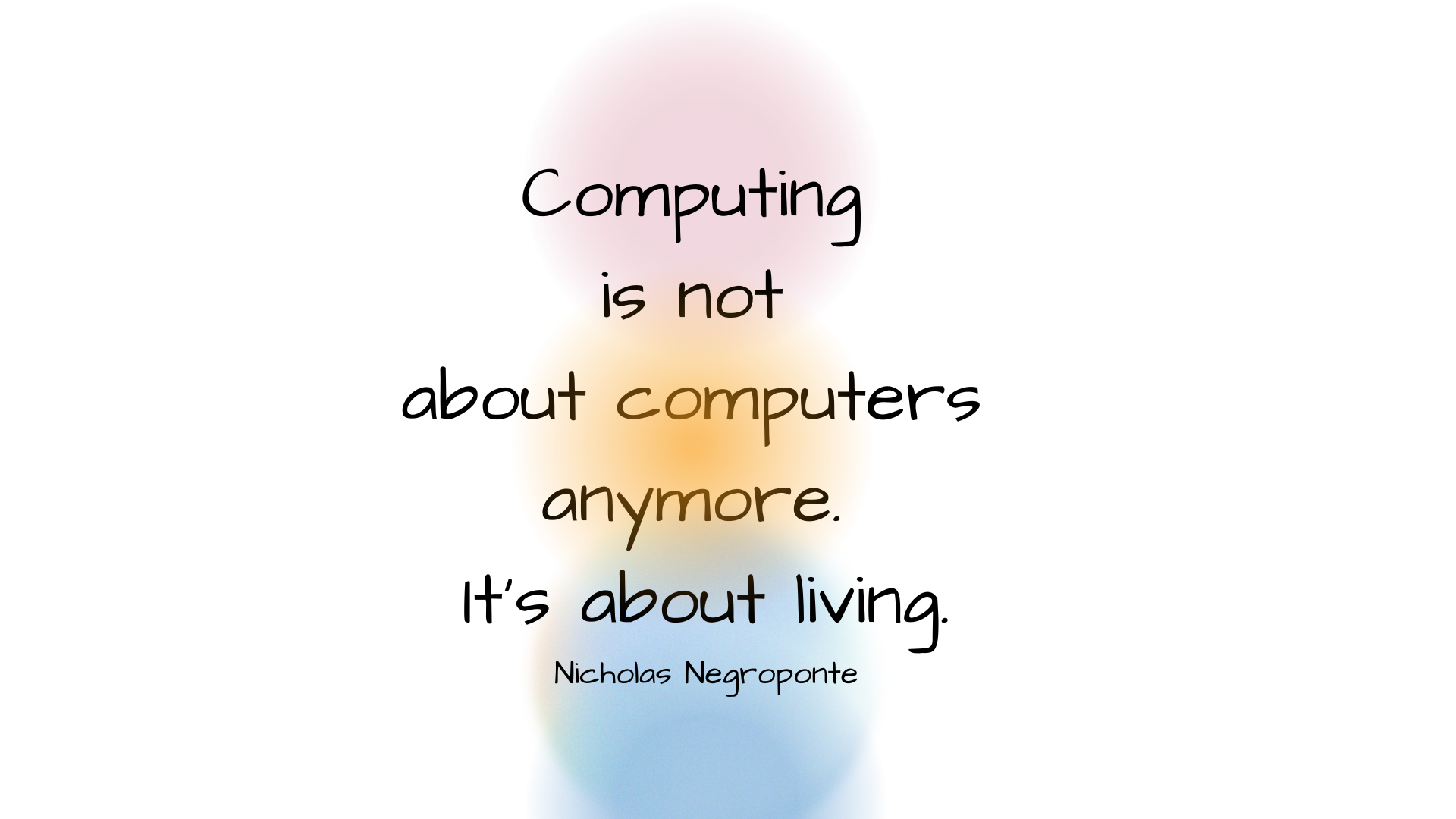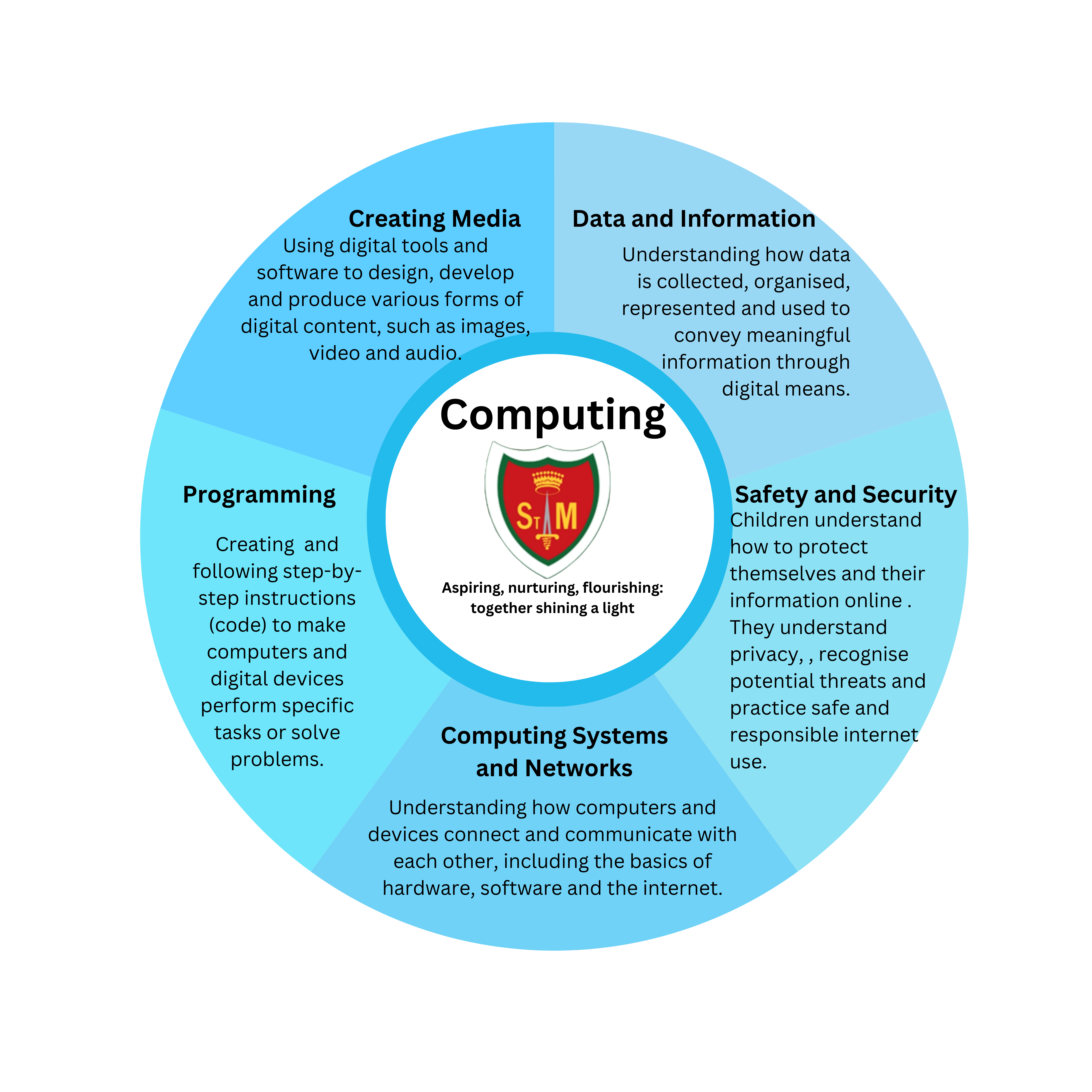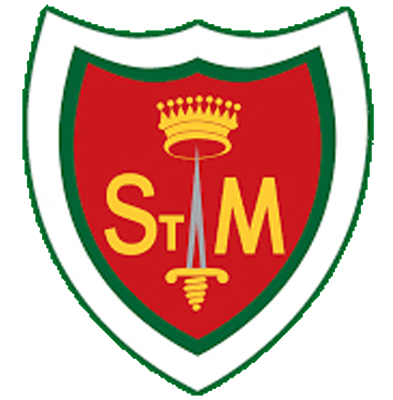Computing

Intent
All pupils at St. Mary’s Primary School have the right to have rich, deep learning experiences that balance all the aspects of computing. With technology playing such a significant role in society today, we believe ‘Computational thinking’ is a skill children must be taught if they are to be able to participate effectively and safely in this digital world. A high-quality computing education equips pupils to use creativity to understand and change the world. Computing has deep links with mathematics, science, and design and technology, and provides insights into both natural and artificial systems. We want to model and educate our pupils on how to use technology positively, responsibly and safely. At St. Mary’s, we want our pupils to understand that there is a choice with using technology and as a school we utilise technology (especially social media) to model positive use. This ensures they become digitally literate so that they are able to express themselves and develop their ideas through information and computer technology at a level suitable for the future workplace and as active participants in a digital world.
We teach a curriculum that enables children to become effective users of technology who can:
- Understand and apply the essential principles and concepts of Computer Science, including logic, algorithms and data representation;
- Analyse problems in computational term, and have repeated practical experience of writing computer programs in order to solve such problems;
- Evaluate and apply information technology analytically to solve problems;
- Communicate ideas well by utilising appliances and devices throughout all

Implementation
At St. Mary’s, we use, adapt and deliver the ‘Teach Computing’ curriculum from the National Centre for Computing Excellence, which covers the full National Curriculum. It provides an innovation progression framework where computing content (concepts, knowledge, skills and objectives) are organised into interconnected networks. The curriculum can be broken down into three strands: computer science, information technology and digital literacy. The cycle of lessons is based around the main Computing Areas:
- Computing Systems and Networks
- Creating Media
- Data & Information
- Programming
These areas (which include essential vocabulary) plan for progression and depth within our Computing curriculum. In addition to this, teachers work with local secondary schools and visiting experts to enhance learning experiences. Pupils receive one Computing lesson each week. Children and staff also have access to a wide range of platforms with our Google Education accounts.
A key part of implementing our Computing curriculum is ensuring the safety of our pupils. We have an E-Safety Policy that provides guidance for teachers and children about how to use the internet safely. Online Safety is woven into Computing lessons and lessons in the wider curriculum which require the use of technology.
Impact
By the end of Key Stage 2, pupils will be confident, responsible, and creative users of information and communication technology. Our computing curriculum empowers children to see themselves as digital citizens, creators, and problem solvers, laying the foundation for future learning and digital literacy in an increasingly technological world.
We ensure that learning is meaningful, progressive, and embedded through regular assessment opportunities (both formative and summative), use of pupil voice, and a clear focus on key vocabulary and concepts. Each unit culminates in a final task or project that allows pupils to apply their learning in a purposeful and often cross-curricular way—such as creating a simple game, building a webpage, or using code to control a device. These tasks not only demonstrate their understanding but also give them an authentic context in which to showcase their digital skills.
Pupil voice plays a central role in evaluating and shaping our computing provision. Regular feedback is gathered through discussions, surveys, and digital reflections. This insight informs future planning and ensures the curriculum remains relevant, engaging, and responsive to the interests and needs of our learners. We value pupils’ opinions about what they enjoyed, found challenging, and how they see computing connecting to the real world.
